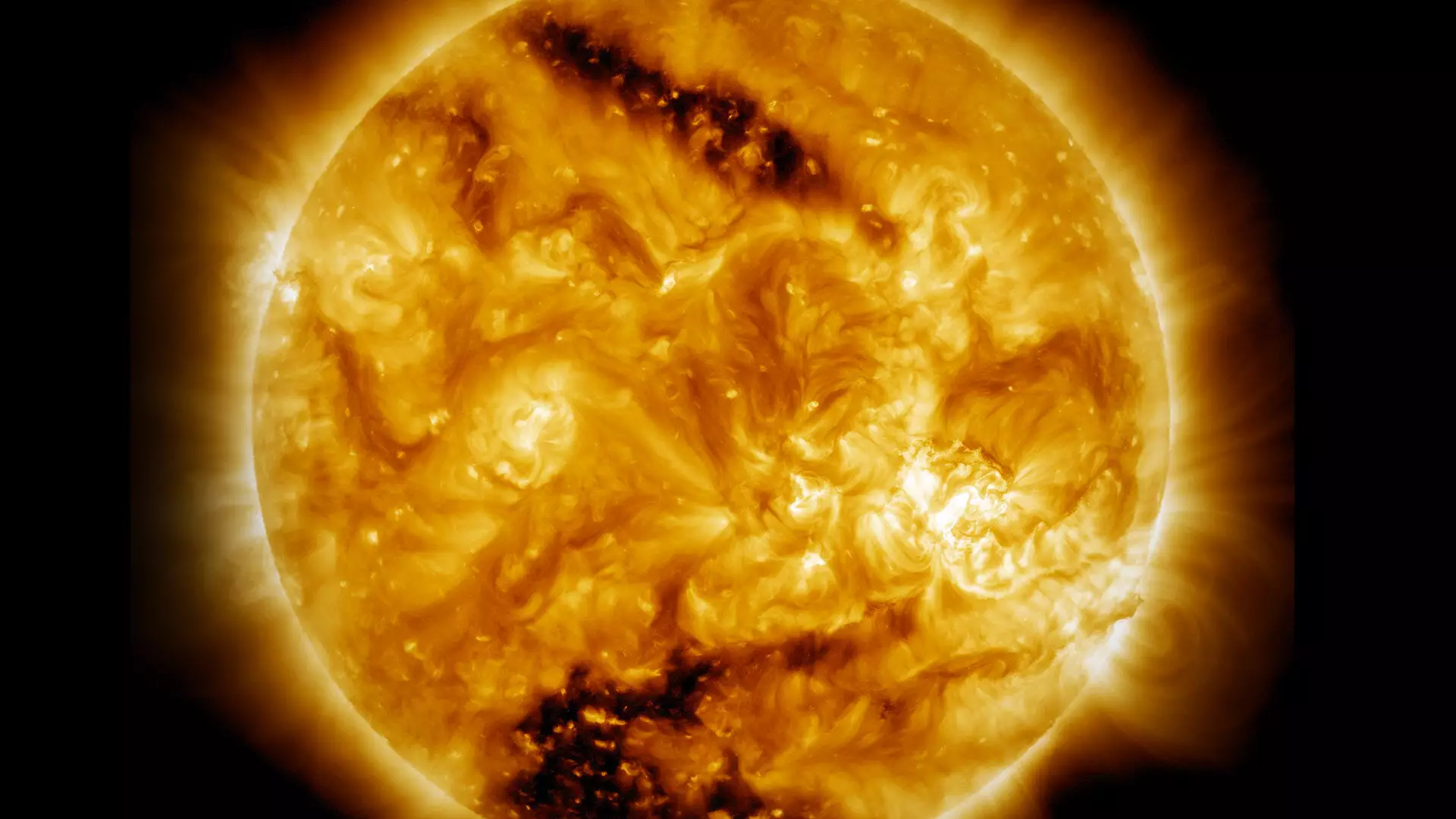The sun, our nearest star, has fascinated scientists and casual observers alike for centuries. Among its many enigmas, one of the most perplexing is the striking temperature difference between the sun’s surface and its outer atmosphere, the solar corona. While the photosphere (the visible surface of the sun) hovers around 10,000 degrees Fahrenheit, the corona soars to approximately 2 million degrees Fahrenheit—an astonishing temperature increase that baffles astrophysicists. This phenomenon has intrigued researchers since it was first quantified in 1939, and despite decades of investigation, the underlying mechanisms remain elusive. However, new research led by Sayak Bose at the Princeton Plasma Physics Laboratory is shedding light on this solar enigma.
The mystery of the sun’s corona has prompted extensive scientific inquiry and debate. The notable temperature discrepancy raises fundamental questions about solar physics and magnetohydrodynamics. The corona, visible during total solar eclipses as a pearly halo surrounding the sun, houses dynamic structures such as coronal holes—regions characterized by open magnetic field lines and lower density. These holes, while less dense, exhibit surprisingly high temperatures, leading scientists to hypothesize various mechanisms for heating, including magnetic reconnection and wave heating.
For years, various theories have tried to piece together how energy from the sun’s core could contribute to the heating of the surrounding plasma in the corona. However, until now, definitive evidence had been lacking. Bose’s recent study provides a significant breakthrough, suggesting a role for reflected Alfvén waves in generating the heat observed in coronal holes.
Hannes Alfvén, a pioneering physicist known for his work on plasma physics, first predicted these waves in astrophysical settings. Alfvén waves can be likened to vibrations on a guitar string, but they propagate through plasma rather than air. In Bose’s research, a large-scale experiment was conducted using a specially designed plasma column at UCLA to recreate conditions akin to the solar atmosphere. The experimental setup involved exciting Alfvén waves and observing their behavior when they encountered variations in plasma density and magnetic field strength—factors that are inherent to coronal holes.
The results revealed that under these experimental conditions, the Alfvén waves could reflect back toward their source after encountering regions of differing characteristics. The interaction between outgoing and reflected waves produced turbulence, which was found to be a mechanism for heating the coronal plasma. This experimental validation provides insights into a long-held hypothesis regarding Alfvén wave reflection, indicating that such waves can indeed contribute significantly to the heating processes in the corona.
The findings presented by Bose and his colleagues represent a crucial step toward demystifying how our sun operates at such extreme temperatures. The ability to replicate aspects of solar physics in a laboratory setting opens avenues for future research—scientists can now further investigate the properties and effects of these waves and their implications for solar activity. The results are not merely a confirmation of theoretical predictions; they prompt a reevaluation of our understanding of solar dynamics.
Moreover, the collaboration among institutions such as Princeton University, UCLA, and Columbia University underscores the collective effort in tackling one of the most enduring mysteries of astrophysics. By marrying experimental physics with computational modeling, the researchers strive to build a more comprehensive framework for understanding solar phenomena. Future endeavors will likely involve complementary observation methods, such as those utilized by space telescopes, which track solar behavior in real-time and provide additional data to overlay on experimental results.
While the heating of the solar corona remains a complex riddle, advancements like those reported by Bose and his team shine fresh light on a long-standing scientific challenge. As we continue to explore our sun’s mysteries, each discovery edges us closer to understanding not only the sun but also the broader dynamics of stellar behavior in the universe.


Leave a Reply